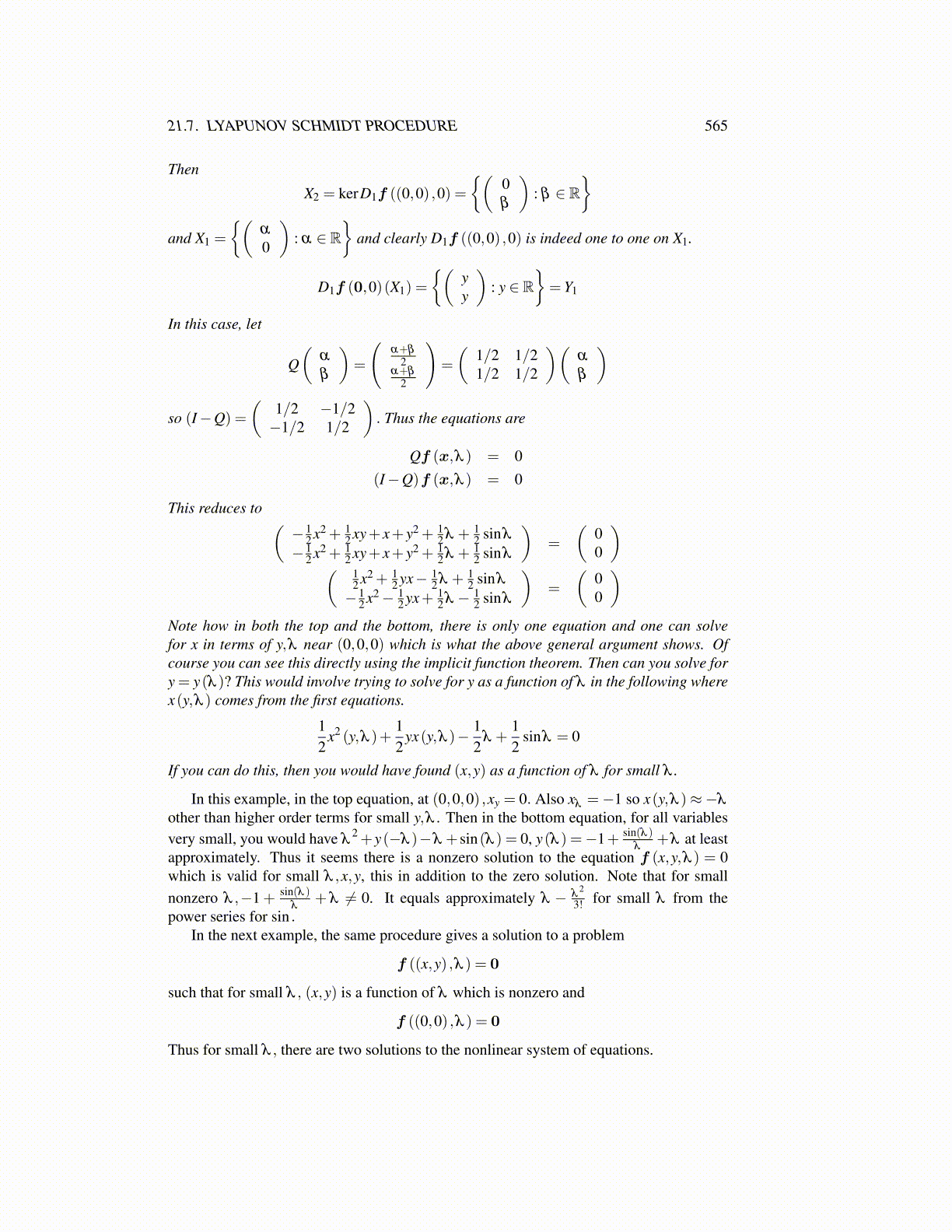
21.7. LYAPUNOV SCHMIDT PROCEDURE 565
Then
X2 = kerD1f ((0,0) ,0) ={(
0β
): β ∈ R
}and X1 =
{(α
0
): α ∈ R
}and clearly D1f ((0,0) ,0) is indeed one to one on X1.
D1f (0,0)(X1) =
{(yy
): y ∈ R
}= Y1
In this case, let
Q(
α
β
)=
(α+β
2α+β
2
)=
(1/2 1/21/2 1/2
)(α
β
)
so (I−Q) =
(1/2 −1/2−1/2 1/2
). Thus the equations are
Qf (x,λ ) = 0(I−Q)f (x,λ ) = 0
This reduces to (− 1
2 x2 + 12 xy+ x+ y2 + 1
2 λ + 12 sinλ
− 12 x2 + 1
2 xy+ x+ y2 + 12 λ + 1
2 sinλ
)=
(00
)( 1
2 x2 + 12 yx− 1
2 λ + 12 sinλ
− 12 x2− 1
2 yx+ 12 λ − 1
2 sinλ
)=
(00
)Note how in both the top and the bottom, there is only one equation and one can solvefor x in terms of y,λ near (0,0,0) which is what the above general argument shows. Ofcourse you can see this directly using the implicit function theorem. Then can you solve fory = y(λ )? This would involve trying to solve for y as a function of λ in the following wherex(y,λ ) comes from the first equations.
12
x2 (y,λ )+12
yx(y,λ )− 12
λ +12
sinλ = 0
If you can do this, then you would have found (x,y) as a function of λ for small λ .
In this example, in the top equation, at (0,0,0) ,xy = 0. Also xλ =−1 so x(y,λ )≈−λ
other than higher order terms for small y,λ . Then in the bottom equation, for all variablesvery small, you would have λ
2 +y(−λ )−λ + sin(λ ) = 0, y(λ ) =−1+ sin(λ )λ
+λ at leastapproximately. Thus it seems there is a nonzero solution to the equation f (x,y,λ ) = 0which is valid for small λ ,x,y, this in addition to the zero solution. Note that for smallnonzero λ ,−1 + sin(λ )
λ+ λ ̸= 0. It equals approximately λ − λ
2
3! for small λ from thepower series for sin .
In the next example, the same procedure gives a solution to a problem
f ((x,y) ,λ ) = 0
such that for small λ , (x,y) is a function of λ which is nonzero and
f ((0,0) ,λ ) = 0
Thus for small λ , there are two solutions to the nonlinear system of equations.